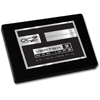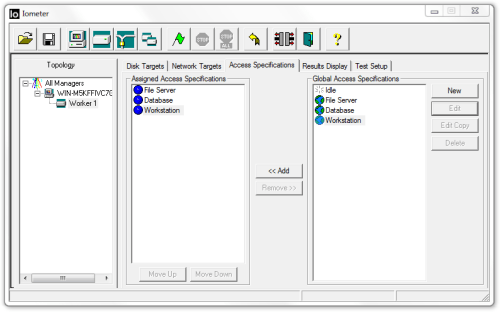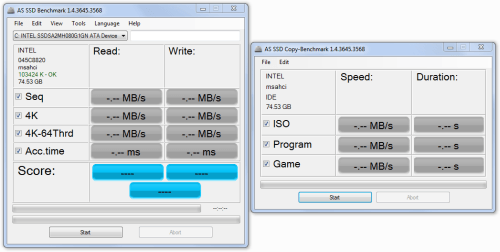- Qualcomm Launches Snapdragon 4 Gen 2 Mobile Platform
- AMD Launches Ryzen PRO 7000 Series Mobile & Desktop Platform
- Intel Launches Sleek Single-Slot Arc Pro A60 Workstation Graphics Card
- NVIDIA Announces Latest Ada Lovelace Additions: GeForce RTX 4060 Ti & RTX 4060
- Maxon Redshift With AMD Radeon GPU Rendering Support Now Available
OCZ Vertex 3 Max IOPS 240GB SATA 6Gbit/s SSD Review

When we took OCZ’s Vertex 3 SSD for a spin last month, there was no other way to sum up our thoughts than ‘blown-away’. How could such a drive get even better? With tweaked firmware and a doubling-up of NAND chips, of course. Let’s take a look at the Vertex 3 Max IOPS edition and see if its price premium is justified.
Page 4 – Synthetic: Iometer & AS SSD
Originally developed by Intel, and since given to the open-source community, Iometer (pronounced “eyeawmeter”, like thermometer) is one of the best storage-testing applications available, for a couple of reasons. The first, and primary, is that it’s completely customizable, and if you have a specific workload you need to hit a drive with, you can easily accomplish it here. Also, the program delivers results in IOPS (input/output operations per second), a common metric used in enterprise and server environments.
The level of customization cannot be understated. Aside from choosing the obvious figures, like chunk sizes, you can choose the percentage of the time that each respective chunk size will be used in a given test. You can also alter the percentages for read and write, and also how often either the reads or writes will be random (as opposed to sequential). I’m just touching the surface here, but what’s most important is that we’re able to deliver a consistent test on all of our drives, which increases the accuracy in our results.
Because of the level of control Iometer offers, we’ve created profiles for three of the most popular workloads out there: Database, File Server and Workstation. Database uses chunk sizes of 8KB, with 67% read, along with 100% random coverage. File Server is the more robust of the group, as it features chunk sizes ranging from 512B to 64KB, in varying levels of access, but again with 100% random coverage. Lastly, Workstation focuses on 8KB chunks with 80% read and 80% random coverage.
Because these profiles aren’t easily found on the Web, with the same being said about the exact structure of each, we’re hosting the software here for those who want to benchmark their own drives with the exact same profiles we use. That ZIP archive (~3.5MB) includes the application and the three profiles in an .icf file.



If ever there was a program that could best illustrate the differences between the Vertex 3 and the V3 Max IOPS, it would be Iometer. This program focuses on small file IOPS, primarily 512 byte, 4KB, and 8KB. Although the Vertex 3 laughed its way through these tests, the Max IOPS laughed louder by delivering an average 18.6% increase in reads and writes in the database test, an average 17.5% increase in the File Server test, and a 23% boost in the Workstation tests.
Iometer tests are more suited for server and enterprise workloads, but they do show what the controller is truly capable of. Controllers that do well in these tests tend to show better performance everywhere else. Until now only the first generation SandForce SF-1200 controllers were able to perform well under these sort of workloads.
AS SSD
As the name hints, AS SSD is a nifty little program written exclusively for solid-state drives. It can be run on a mechanical hard drive, but be warned what takes a few minutes will require the better part of an hour to complete! This handy tool measures sequential reads and writes in addition to the important 4KB random reads and writes, then ranks the results with a final score for quick comparisons with other SSDs.
In addition to the main test there is a secondary benchmark that simulates the type of data transferred for ISO, Program, and Game files. With version 1.6 a compression benchmark was also added although not utilized here. We selected this program for its precision, ability to generate large file sizes on the fly, and that it is written to bypass Windows 7’s automatic caching system. The tool does not bypass any onboard cache.





The SATA 6Gb/s interface allows the Vertex 3 (and the Max IOPS) room to stretch its legs. When it comes to read requests SSDs have been bottlenecked by the SATA 3Gb/s interface for some time. The interface isn’t responsible for the 4KB and 4K-Thrd scores, however; these are purely due to the controller.
4K-Thrd is similar to the 4K test but spawns multiple requests; basically this tests how good the SSD is at handling multiple file actions at once, or queue depth. Queue depth wasn’t an issue with HDDs as they were generally too slow to handle more than a few simultaneous IOPS at a time, but with SSDs it is important to have a good controller with a high queue depth.
As one might’ve already guessed, the Vertex 3 and the V3 Max IOPS both clean house with these tests; I’m not sure Alex ever envisioned scores so stratospheric appearing quite so soon with his program! There is one thing that can be deduced from these results though, and that is the Max IOPS appears to trade a small portion of its strong write performance for an even larger increase in read performance compared to the vanilla V3. Even so the Max IOPS consistently scored 9.5% higher in the final overarching SSD score, which is no small feat considering 65 points amounts to a tangible difference in its own right between the other drives.
Support our efforts! With ad revenue at an all-time low for written websites, we're relying more than ever on reader support to help us continue putting so much effort into this type of content. You can support us by becoming a Patron, or by using our Amazon shopping affiliate links listed through our articles. Thanks for your support!






